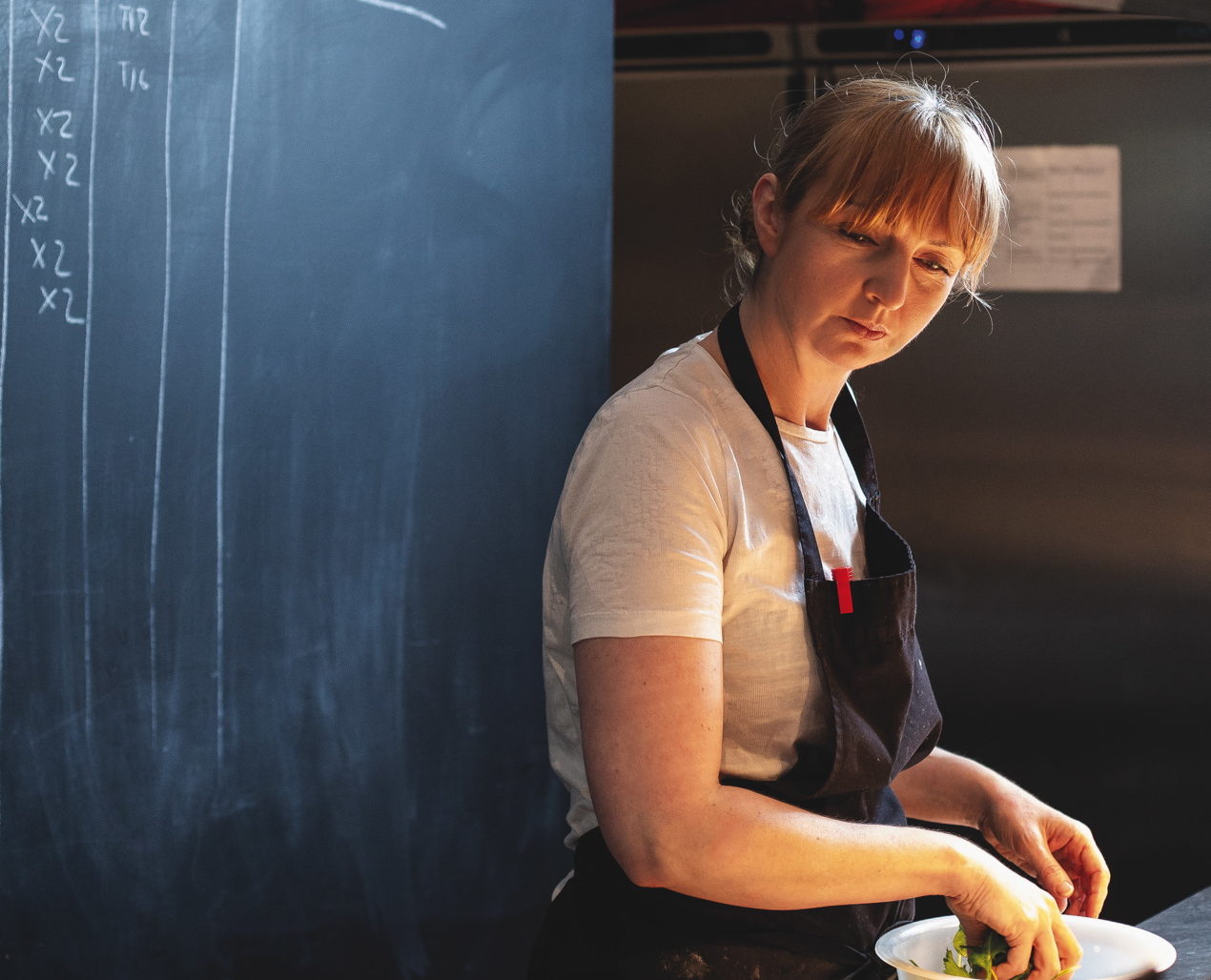Whimberries and wild mushrooms
When it comes to seasonal produce, August is a big show off
Sticking to the seasons can be challenging in the middle of winter, particularly during the hunger gap – a time of year in the UK when the new season’s crops aren’t yet making an appearance, and produce that has been kept in storage over winter is starting to deteriorate in quality. In our kitchen we spend a lot of time in summer pickling and preserving produce so that we have a larder of interesting ingredients to cook from in the leaner months, and I personally never tire of roast cabbage or potatoes, but I understand that for a person less willing than I to drown their vegetables in butter, salt and garlic, February may feel like a bit of a spartan month.
Compare this, then, to the summer months when there is a bewilderment of produce available to cook with. The availability lists we get from our suppliers are almost obscene, heaving with tomatoes, peas, beans, salad leaves, cucumbers, courgettes, spinach, parsley, lovage, sorrel – all the lovely things. It’s easy to get over-excited and end up with a menu that is 90 per cent salad based.
The summer vegetable season starts off strong with asparagus in late May, and into June. Tomatoes, early new potatoes and the first strawberries make a delightful and welcome appearance as June becomes July. Then, in come the peas. There’s an argument absolutely raging amongst top chefs about whether fresh peas or frozen are better. I suppose it depends what you want from your peas – the problem I have with frozen peas is not the quality or flavour, but simply that you cannot drown them in butter and salt, and suck them out of the pod, edamame-style.
By late July, I’m trying to dismiss thoughts of stew with dauphinoise potatoes, although they creep into my mind occasionally, and focus instead on enjoying the hell out of delicious lunches made from thinly sliced raw vegetables, dressed in salt, oil, vinegar and mustard, with bread and cheese, and nothing else. I’ve included my vinaigrette recipe overleaf, because it is good on all the vegetable things you can get hold of in summer, but equally will make that twice-weekly roast cabbage in February all the more enjoyable.
Things are trundling along nicely in terms of seasonal abundance, and it’s all rather splendid. And then along comes August. Big, show-off August. Berries of every kind start to some through. Wild mushroom season starts up again, with ceps/porcini making a bold, flavoursome entrance. Game season returns, with wild deer from 1 August, and the first of the game birds available from 12 August. If, like me, you eat meat but avoid farmed meat, this is a joyous month. I love wood pigeon and rabbit, but by September I’ve loved it enough for a while, thanks very much. Seafood perhaps isn’t having the strongest month but in every other way, August is winning.
There are a few precious weeks during the British growing season when you can eat all locally grown produce and feel like you are on holiday, and they are usually in August. The North West of England will never be Provence or the Algarve. We will never be able to pluck ripe, sum-warmed peaches from the tree, etc, etc. We have got something they haven’t though! We have whimberries, and whimberries are wonderful.
The first two weeks of August are usually prime whimberry time, but like all these things, it depends a bit on what the weather has been doing. I grew up just north of Bury, at the foot of Holcombe Hill, which is a fantastic spot for whimberrying. The traditional thing to do is make a pie (aka blackmouth pie) but if whimberry time coincides with the start of the game season, they also make an excellent sauce or relish to go with strong meats. Be warned, they are absolutely tiny and very time-consuming to pick. It’s best to enlist the help of small, bribable children if at all possible. Holcombe Hill on a sunny day is a joy in itself though, even if you don’t end up with a huge haul.
With August also comes the promise of September – each passing season is a bittersweet mixture of fading beauties and new delights – and September is a belter. More game, more mushrooms, squashes and pumpkins, delicious late season Scottish berries, shellfish making a comeback, and perhaps the odd stew with dauphinoise potatoes are all right around the corner.
Mary-Ellen is a chef of 20 years’ experience, and a writer of at least two or three weeks’ experience, spread over that same 20 years. She was chef at the Michelin-starred Sharrow Bay before working at the Fat Duck under Heston Blumenthal, before opening Aumbry in Prestwich and subsequently the Creameries in Chorlton, where she has just handed over the day-to-day running to focus on more writing and food events – and is definitely going to finish that book this year.

Leave a reply
Your email address will not be published.